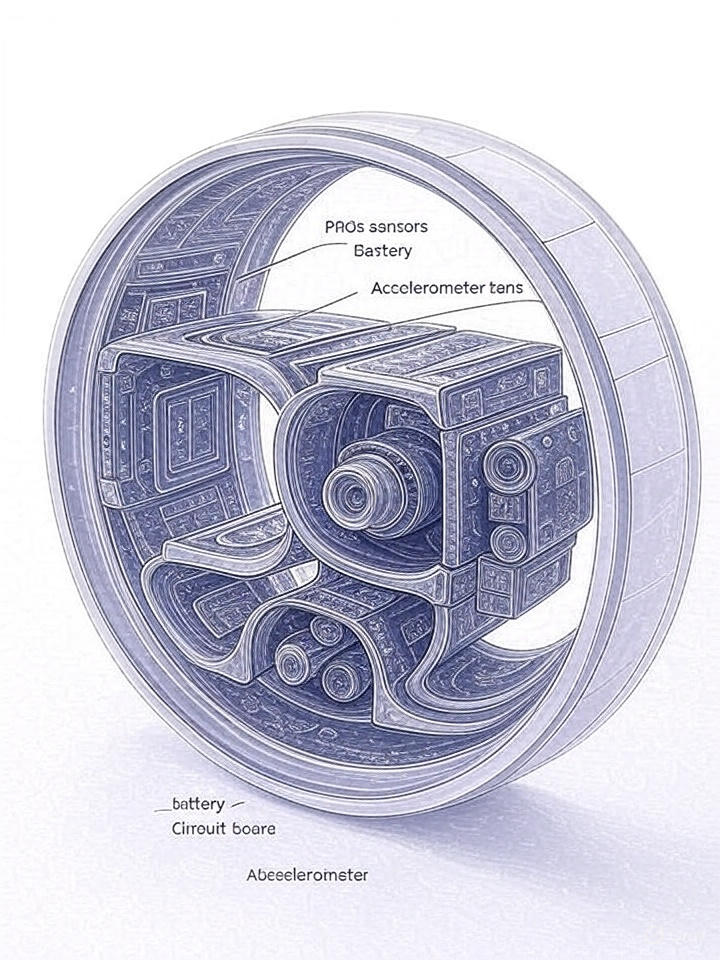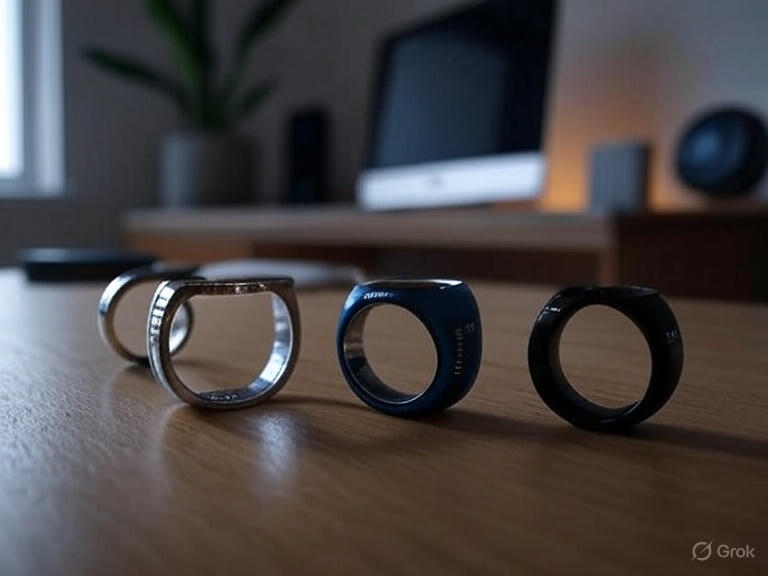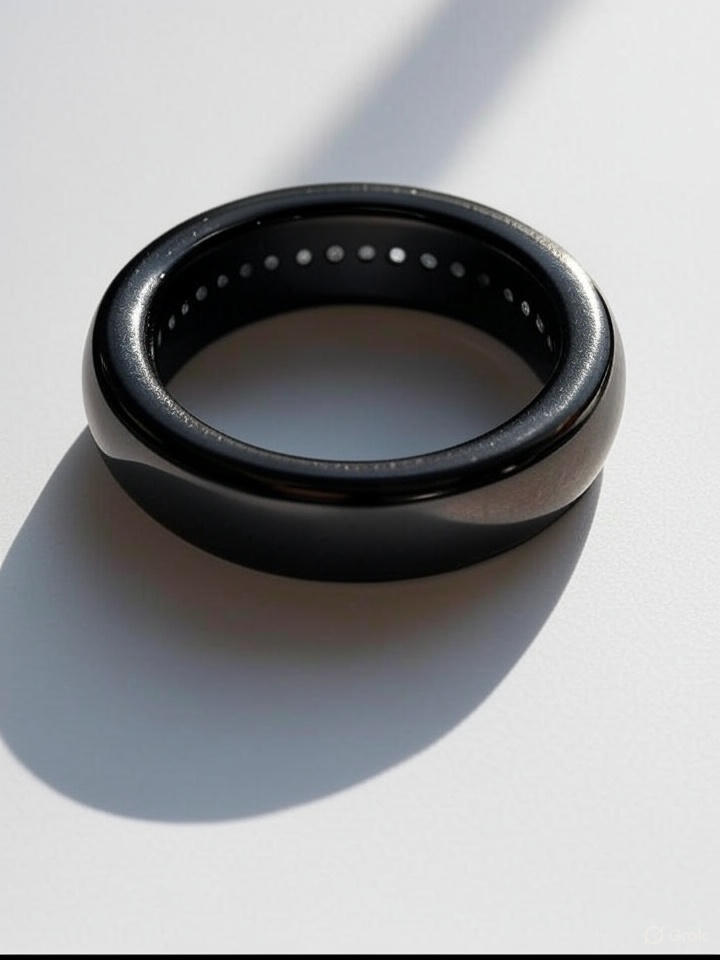The wearable technology market has exploded in recent years, with smartwatches and fitness trackers becoming commonplace. However, a newer category of wearables has emerged that promises to deliver health monitoring capabilities in a more discreet, comfortable form factor: health rings. These tiny devices, worn on your finger like traditional jewelry, claim to track everything from sleep patterns to heart rate variability. But with prices ranging from $200 to $500 or more, the question remains: are health rings worth the investment?
What Are Health Rings?
Health rings, also known as smart rings or fitness rings, are wearable devices designed to monitor various aspects of your health and wellness. Unlike bulky smartwatches or chest-worn heart rate monitors, these rings offer a minimalist approach to health tracking. They typically contain sensors that can measure heart rate, sleep patterns, activity levels, body temperature, and other biometric data.
The concept builds on the broader category of wearable technology, which has gained significant traction in the consumer electronics market. According to industry reports, the global wearable devices market is expected to reach substantial growth figures in the coming years, driven by increasing health consciousness and technological advancements.
The Technology Behind Health Rings

Modern health rings incorporate several sophisticated technologies into their compact form factor. Most devices utilize photoplethysmography (PPG) sensors to detect blood flow changes, which can reveal heart rate and heart rate variability data. Advanced models also include:
Core Sensors and Features
Optical Heart Rate Monitoring: Using LED lights and photodiodes, these rings can continuously monitor your heart rate throughout the day and night. The technology works by detecting changes in blood volume as your heart pumps, providing real-time cardiovascular data.
Accelerometers and Gyroscopes: These motion sensors track your daily activities, from steps taken to workout intensity. They can differentiate between various types of movement and provide insights into your overall activity level.
Temperature Sensors: Many health rings include temperature monitoring capabilities, which can help track changes in your body temperature that might indicate illness, stress, or changes in your sleep cycle.
Sleep Tracking Technology: By combining multiple sensors, health rings can monitor sleep stages, duration, and quality. They analyze movement patterns, heart rate changes, and other biometric data to provide comprehensive sleep insights.
The integration of these technologies into such a small form factor represents a significant engineering achievement. However, the question remains whether the benefits justify the cost and potential limitations compared to other wearable options.
Popular Health Ring Brands and Models
The health ring market has seen several key players emerge, each offering unique features and capabilities:
Oura Ring: Perhaps the most well-known health ring, the Oura has gained popularity among athletes, biohackers, and health enthusiasts. It offers comprehensive sleep tracking, recovery insights, and activity monitoring. The ring has been featured in various Forbes health and technology articles, highlighting its growing influence in the wearable market.
Samsung Galaxy Ring: As a major technology company, Samsung has entered the health ring space with a device that integrates with their broader ecosystem of health and fitness apps. This represents the mainstream adoption of ring-based health monitoring.
Motiv Ring: Focusing on fitness tracking and heart rate monitoring, the Motiv ring targets active individuals who want continuous health monitoring without the bulk of traditional fitness trackers.
RingConn: A newer entrant that offers competitive features at various price points, making health ring technology more accessible to a broader audience.
Each of these brands offers different combinations of features, battery life, and design aesthetics, making the choice largely dependent on individual needs and preferences.
Benefits of Health Rings
Continuous, Unobtrusive Monitoring
One of the primary advantages of health rings is their ability to provide continuous health monitoring without the bulk and visibility of smartwatches. This discrete form factor means you’re more likely to wear the device consistently, leading to more comprehensive and accurate health data collection.
The continuous monitoring capability is particularly valuable for understanding patterns in your health metrics over time. Unlike spot-checking with traditional medical devices, health rings provide a continuous stream of data that can reveal trends and patterns that might otherwise go unnoticed.
Superior Sleep Tracking

Many users find that health rings excel in sleep tracking compared to wrist-worn devices. The finger placement often provides more accurate heart rate and heart rate variability measurements during sleep, when wrist-based sensors might be less reliable due to reduced blood flow to the extremities.
The sleep insights provided by health rings often go beyond simple sleep duration, offering analysis of sleep stages, sleep efficiency, and recovery metrics. This information can be valuable for optimizing sleep quality and overall health, which aligns with broader health promotion initiatives that emphasize the importance of quality sleep for community health and wellness.
Long Battery Life
Health rings typically offer impressive battery life compared to smartwatches, often lasting 4-7 days on a single charge. This extended battery life reduces the frequency of charging interruptions and ensures more consistent data collection.
Durability and Water Resistance
Most health rings are designed with durability in mind, featuring water-resistant or waterproof construction that allows for continuous wear during activities like swimming, showering, or intense workouts.
Limitations and Drawbacks
Accuracy Concerns
While health rings have improved significantly in terms of accuracy, they may not always match the precision of dedicated medical devices or even some higher-end fitness trackers. The finger-based sensor placement, while discrete, can sometimes be less reliable than chest-worn heart rate monitors for certain types of measurements.
For individuals with specific medical conditions or those requiring clinical-grade accuracy, health rings may not be sufficient as standalone monitoring devices. It’s important to understand that these devices are designed for general wellness tracking rather than medical diagnosis or treatment.
Limited Display and Interaction
Unlike smartwatches, health rings typically don’t feature displays or extensive interaction capabilities. All data viewing and analysis must be done through smartphone apps, which some users might find limiting. This means you can’t quickly glance at your current stats without reaching for your phone.
Size and Fit Challenges
Getting the right fit is crucial for accurate sensor readings, but it can be challenging with rings. Finger size can fluctuate due to temperature, hydration levels, and other factors, potentially affecting sensor accuracy. Many companies provide sizing kits, but the process can still be more complex than adjusting a watch band.
Feature Limitations
While health rings excel in certain areas like sleep tracking and basic activity monitoring, they typically can’t match the comprehensive feature sets of advanced smartwatches. Features like GPS tracking, music control, payment capabilities, and extensive app ecosystems are generally not available on health rings.
Cost Analysis: Are Health Rings Worth the Investment?
The question of whether health rings are worth their cost depends largely on your specific needs, preferences, and how you value the unique benefits they offer.
Price Comparison with Alternatives
Health rings typically range from $200 to $500, positioning them in the mid-to-high range of wearable devices. When compared to premium smartwatches that can cost $300-$800 or more, health rings are competitively priced, especially considering their specialized focus on health monitoring.
However, when compared to basic fitness trackers that might cost $50-$150, health rings represent a significant premium. The question becomes whether the unique form factor and specialized features justify this additional cost.
Long-term Value Considerations
Health rings often require subscription services for advanced features and detailed analytics, adding to the total cost of ownership. These subscription fees, typically ranging from $5-$10 per month, can add up to $60-$120 annually, significantly increasing the long-term investment.
The durability and battery life of health rings can provide good long-term value, as they’re likely to last several years with proper care. However, like all electronic devices, they will eventually need replacement as technology advances and batteries degrade.
Health and Wellness Impact
Behavioral Change and Motivation
The real value of any health monitoring device lies in its ability to motivate positive behavioral changes. Health rings can be particularly effective in this regard because their continuous, unobtrusive monitoring provides consistent feedback without being intrusive or demanding constant attention.
Users often report that the detailed sleep insights provided by health rings help them understand and improve their sleep habits, leading to better overall health outcomes. The correlation between quality sleep and various health markers is well-documented in medical literature available through sources like PubMed.
Integration with Broader Health Goals
Health rings work best when integrated into a comprehensive approach to health and wellness. They provide data and insights that can inform decisions about exercise, sleep, stress management, and recovery. This aligns with evidence-based approaches to health promotion that emphasize the importance of comprehensive lifestyle modifications.
The data collected by health rings can also be valuable for healthcare providers, offering objective insights into a patient’s daily health patterns that might not be apparent during brief clinical visits.
Scientific Validity and Research
The growing body of research on wearable health devices provides some validation for the utility of health rings. Studies published in peer-reviewed journals have examined the accuracy and effectiveness of various wearable devices, including ring-form factors.
However, it’s important to note that while these devices can provide valuable insights, they should not replace professional medical advice or clinical assessments. The World Health Organization and other health authorities emphasize that wearable devices should complement, not replace, traditional healthcare approaches.
Who Should Consider Health Rings?
Ideal Candidates
Health rings are particularly well-suited for individuals who:
- Value discrete, continuous health monitoring
- Are primarily interested in sleep optimization and recovery tracking
- Find traditional fitness trackers or smartwatches uncomfortable or intrusive
- Want long battery life with minimal charging interruptions
- Are committed to using smartphone apps for data analysis and insights
Athletes and Fitness Enthusiasts
Many professional and amateur athletes have adopted health rings as part of their training and recovery protocols. The detailed recovery metrics and heart rate variability data can provide valuable insights into training readiness and the need for rest or adjustment in training intensity.
Health-Conscious Individuals
People who are proactively managing their health and wellness often find health rings valuable for tracking trends and patterns over time. The continuous monitoring capability can reveal insights that might not be apparent from periodic check-ups or manual tracking methods.
Sleep Optimization Focus
Individuals specifically interested in improving their sleep quality may find health rings particularly valuable, as many users report that the sleep tracking capabilities of rings are superior to wrist-worn alternatives.
Comparing Health Rings to Other Wearables
Health Rings vs. Smartwatches
Smartwatches offer more comprehensive functionality, including communication features, apps, GPS, and larger displays. However, they typically have shorter battery life, are more noticeable, and can be less comfortable for continuous wear, especially during sleep.
Health rings excel in specific areas like sleep tracking and discrete monitoring but lack the versatility and immediate feedback capabilities of smartwatches. The choice often comes down to whether you prioritize comprehensive functionality or specialized health tracking.
Health Rings vs. Fitness Trackers
Traditional fitness trackers often provide a middle ground between the comprehensive functionality of smartwatches and the specialized focus of health rings. They typically offer displays for immediate feedback while maintaining relatively long battery life.
Health rings differentiate themselves through their form factor and focus on metrics like heart rate variability and detailed sleep analysis that may not be available or as accurate on traditional fitness trackers.
Health Rings vs. Medical Devices
It’s crucial to understand that health rings are consumer wellness devices, not medical equipment. While they can provide valuable insights and trend data, they cannot replace medical-grade monitoring devices for individuals with specific health conditions requiring clinical-level accuracy.
Future of Health Ring Technology
The health ring market continues to evolve, with improvements in sensor accuracy, battery life, and feature sets. Future developments may include:
Advanced Health Metrics
Emerging technologies may enable health rings to monitor additional biomarkers, such as blood glucose levels, hydration status, or even blood pressure. However, these advances will need to overcome significant technical and regulatory challenges.
Improved Accuracy and AI Integration
Machine learning and artificial intelligence integration promise to improve the accuracy of health insights and provide more personalized recommendations based on individual patterns and trends.
Integration with Healthcare Systems
Future health rings may offer better integration with electronic health records and healthcare provider systems, making the data more clinically relevant and actionable.
Making the Decision: Are Health Rings Worth It?
The question of whether health rings are worth the investment doesn’t have a universal answer. The value proposition depends on several personal factors:
Consider Your Priorities
If you’re primarily interested in discrete, continuous health monitoring with a focus on sleep optimization and recovery tracking, health rings offer unique advantages that may justify their cost. The form factor and specialized focus can provide insights that other wearables might miss.
Evaluate Your Commitment
Health rings provide the most value when used consistently over extended periods. If you’re not committed to wearing the device continuously and regularly reviewing the data and insights it provides, the investment may not be worthwhile.
Assess Your Budget
Consider not just the initial purchase price but also ongoing subscription costs and the eventual need for replacement. Compare this total cost of ownership with alternatives that might meet your needs at different price points.
Think Long-term
The value of health rings often becomes apparent over months or years of use, as patterns and trends in your health data become clear. Short-term users may not realize the full benefit of the investment.
Conclusion
Health rings represent a unique approach to personal health monitoring, offering advantages in specific areas like sleep tracking and discrete, continuous monitoring. For individuals who value these particular benefits and are willing to invest in specialized health technology, they can provide valuable insights and motivation for health improvement.
However, they’re not universally superior to other wearable options, and their value depends heavily on individual needs, preferences, and commitment to using the technology effectively. The decision should be based on a careful evaluation of your specific health goals, lifestyle, and budget.
As the technology continues to evolve and improve, health rings are likely to become more capable and potentially more valuable. For now, they occupy a specialized niche in the wearable technology market, offering unique benefits to users who prioritize their particular strengths.
The investment in a health ring should be viewed as part of a broader commitment to health and wellness, complementing other healthy lifestyle choices and professional healthcare guidance. When used as part of a comprehensive approach to health management, they can provide valuable data and insights that support better health outcomes and quality of life.




